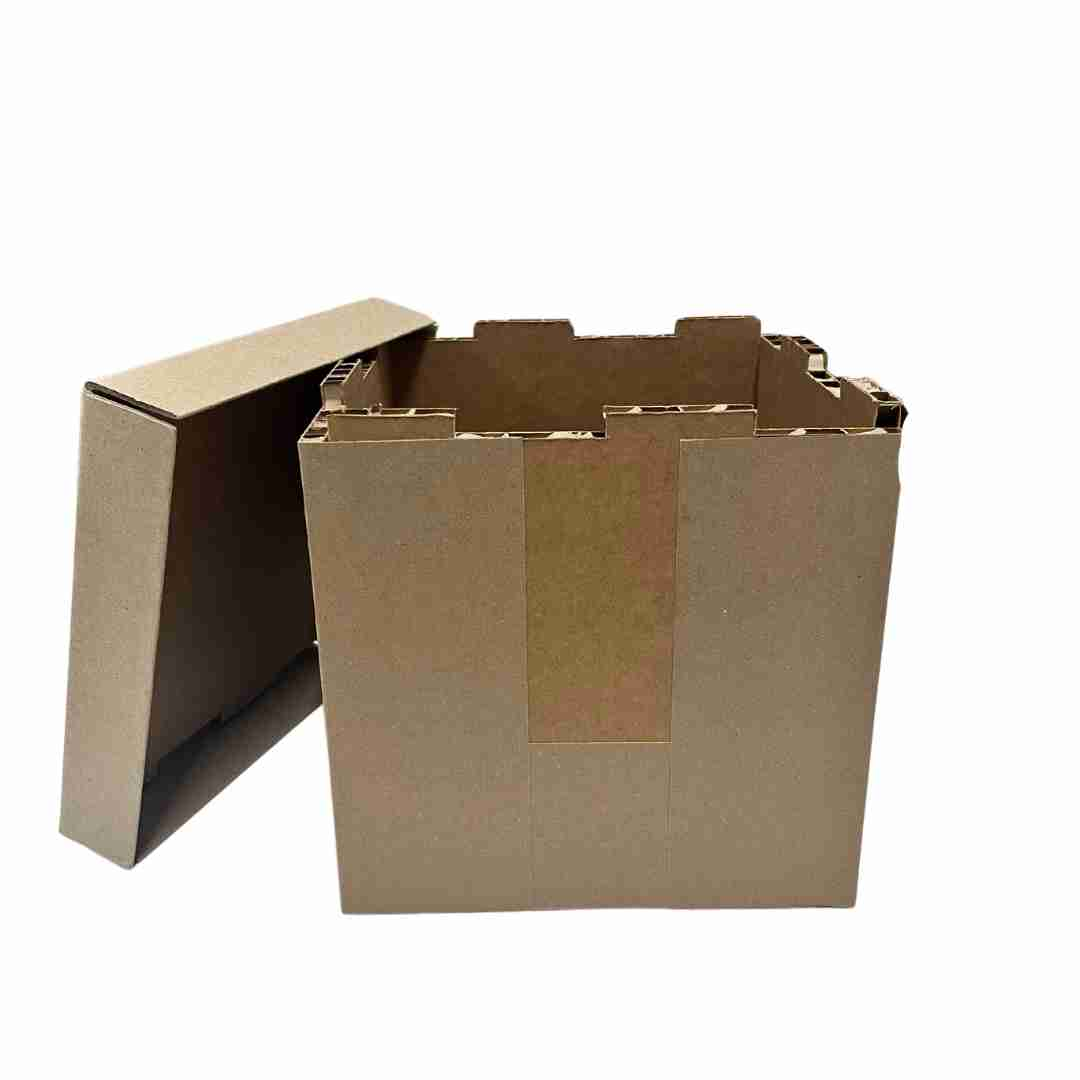Cardboard boxes vs. honeycomb boxes: understanding the differences between these packaging solutions is crucial when choosing the right one for your unique packaging needs. In this article, we will delve into a detailed comparison of these two popular packaging options to help you make an informed decision.


Material Composition
Cardboard boxes are typically made from paper pulp, processed, and pressed into sheets. These sheets are layered and glued together to form the sturdy walls of the box. The most common type is corrugated cardboard, which features a fluted paper layer between two flat paper layers.

Honeycomb boxes are constructed from kraft paper formed into a hexagonal grid pattern, resembling a honeycomb. This honeycomb core is sandwiched between two flat paper sheets to make honeycomb boards. Providing excellent strength, and rigidity with less material. Making them ideal for packaging of fragile, valuable, and uniquely shaped items.

Strength and Durability: Cardboard Boxes vs. Honeycomb Boxes
Cardboard boxes offer good strength and durability for most packaging needs. The corrugated design provides cushioning and can withstand a reasonable amount of pressure and impact. However, they may require additional reinforcement for heavy or fragile items.
Honeycomb boxes excel in strength and durability due to their unique structure. The honeycomb pattern distributes weight evenly and absorbs impact more effectively than traditional cardboard, making them ideal for custom packaging heavy, fragile, or irregularly shaped items.
Weight and Handling: Cardboard Boxes vs. Honeycomb Boxes
While relatively lightweight, cardboard boxes can become unmanageable for larger items. The weight increases with the thickness of the cardboard, affecting shipping costs and ease of handling.
Honeycomb boxes are significantly lighter than traditional cardboard boxes. They also have higher weight bearing capacity compared to cardboard boxes of the same volume. This reduction in weight translates to lower shipping costs and easier handling, especially for fragile and large or heavy items.
Environmental Impact: Cardboard Boxes vs. Honeycomb Boxes
Cardboard is generally recyclable and biodegradable, making it an eco-friendly option. However, the production process can be resource-intensive, and the use of virgin paper pulp contributes to deforestation.
Honeycomb boxes are also recyclable and biodegradable making them the ideal eco-friendly packaging option. Their lightweight nature means less material is used in their construction, reducing the overall environmental footprint. Many honeycomb boxes are made from recycled materials, such as recycled paper and water based glue. Further enhancing their eco-friendliness.
Cost Efficiency: Cardboard Boxes vs. Honeycomb Boxes
Cardboard boxes are widely available and generally cost-effective for standard packaging needs. However, additional reinforcement or customization increases the costs.
Honeycomb boxes might have a higher initial cost due to their specialized construction, but they often provide cost savings in the long run. Their superior strength and lightweight nature reduces shipping costs and minimizes the need for additional packaging materials.
Customization and Versatility
Cardboard boxes can be easily customized in terms of size, shape, and print design. They are versatile and suitable for a wide range of applications, from shipping and storage to retail packaging.

On the other hand honeycomb boxes also offer a high degree of customization. They are can be tailored to fit specific items and printed with branding or other designs. Their versatility makes them suitable for custom packaging for various industries, including furniture, electronics, and art.

Conclusion
In the debate of cardboard boxes vs. honeycomb boxes, both options offer unique advantages. Cardboard boxes are a tried-and-true solution, providing good strength, versatility, and cost-efficiency for many packaging needs. Honeycomb boxes, on the other hand, offer superior strength and durability, are lighter in weight, and have a lower environmental impact, making them an excellent choice for heavy, fragile, or irregularly shaped items.
When choosing between the two, consider the specific requirements of your packaging needs. These include the weight, fragility, and shape of the items being shipped, as well as environmental considerations and cost factors. By understanding the strengths and limitations of each option, you can select the best packaging solution to ensure the safe and efficient transport of your goods.
